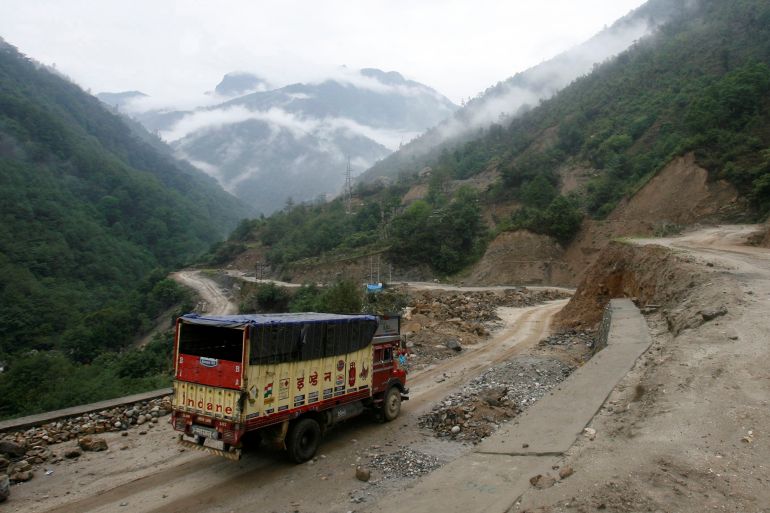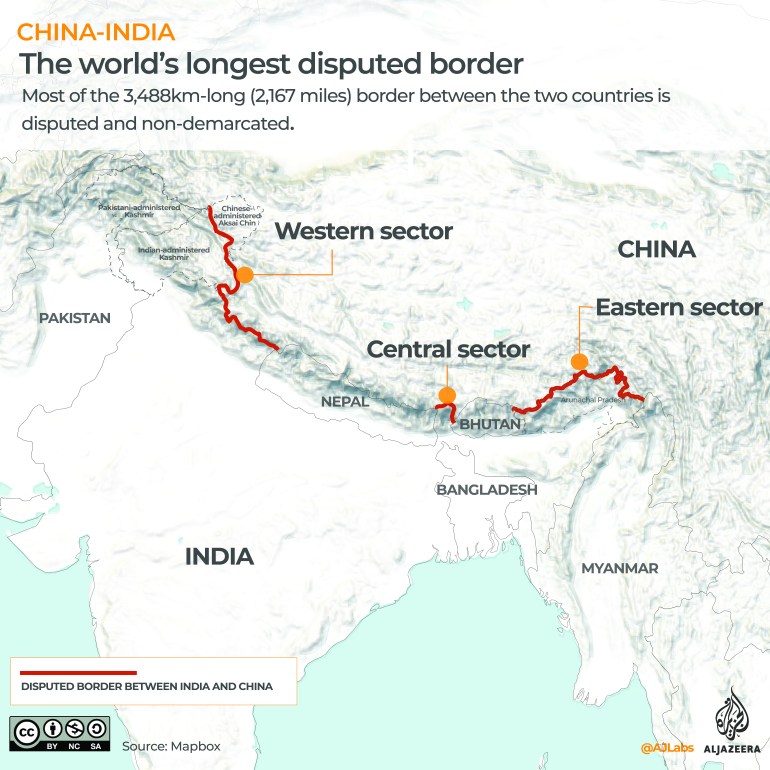India says China trying to ‘change status quo’ on disputed border
Indian troops prevented Chinese counterparts from entering Indian territory during a border scuffle last week, defence minister Rajnath Singh tells parliament.

India has accused China of trying to “unilaterally change the status quo” on their disputed Himalayan border after clashes last week in the Tawang sector of India’s northeastern state of Arunachal Pradesh.
“On 09 December 2022, PLA troops attempted to unilaterally change the status quo by encroaching on the Line of Actual Control, in the Yangtse area of Tawang Sector,” India’s defence minister Rajnath Singh told parliament on Tuesday, referring to China’s People’s Liberation Army and the de facto border.
Keep reading
list of 4 itemsIndian, Chinese troops pull back from western Himalayan area
India says ties with China can’t be normal with border tension
Concerns as China builds bridge on lake at disputed India border
“Our army faced this attempt of China with firmness. A scuffle ensued in this face-off. The Indian army bravely prevented the PLA from encroaching on our territory and forced them to withdraw to their posts. Some soldiers from both sides were injured in the skirmish,” he said.
The Line of Actual Control is the de facto border separating Chinese and Indian-held territories from Ladakh in the west to India’s eastern state of Arunachal Pradesh, which China claims in its entirety. India and China fought a war over the border in 1962.

Chinese foreign ministry spokesman Wang Wenbin said the situation at the India-China border was “generally stable”.
“As far as we understand, the China-India border situation is stable overall,” he said, adding the two sides “maintained unobstructed dialogue on the border issue through diplomatic and military channels”.
Last week’s fight was the first between the two countries since deadly clashes in June 2020 when Indian and Chinese troops were involved in hand-to-hand combat in the Galwan Valley of Ladakh.
The incident led to the death of 20 Indian and four Chinese soldiers, with both countries stationing tens of thousands of troops backed by artillery, tanks and fighter jets along the Line of Actual Control.
After multiple meetings between military commanders, some Indian and Chinese soldiers have pulled back from a key friction point in Ladakh since the 2020 clash.
Rahul Bedi, a New Delhi-based defence analyst, told Al Jazeera the latest clash on the Line of Actual Control is “serious and disturbing”.
“It is serious in the sense that these clashes are anticipated to exacerbate. The clashes are not going to disappear. The clash in Galwan Valley happened in June 2020. This has happened now and it is quite possible that is going to be followed by various other clashes,” he said.
Bedi said India does not have either diplomatic, political, financial or military leverage over the Chinese.
“There have been 16 rounds of talks between commanders of the two armies. The Chinese have decided on their terms. This is entirely Chinese-driven – the agenda, the narratives, and the stories. India has not had much say in this. So, the Chinese can do what they want at a time and place of their choosing.”
Tensions between the two Asian giants persist but troops on both sides have adhered to longstanding protocols to avoid the use of firearms along the Line of Actual Control.
The latest scuffle follows joint military exercises last month between India and the United States in the northern Indian state of Uttarakhand, which borders China.
Even before the June 2020 clash, India was moving strategically closer to the West, deepening security cooperation with the US, Japan and Australia in the Asia-Pacific region – the so-called Quad alliance.
In the aftermath of the 2020 clash, India banned hundreds of mobile applications of Chinese origin, including the popular social media platform TikTok.
Chinese firms operating in India, including cellphone makers Xiaomi and Huawei, have been raided by the tax authorities.
However, bilateral trade remains brisk at approximately $100bn a year, with India importing from China far more than it exports there.